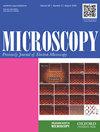Application of deproteinized bovine bone mineral as proangiogenic scaffold for alveolar bone formation in beagle dogs
IF 1.8
4区 工程技术
引用次数: 1
Abstract
Alveolar bone repair after tooth extraction is essential after oral surgeries. Various grafting materials are used to promote the regeneration of lost alveolar bone. This study analysed the morphological features of the tissue regeneration process using deproteinized bovine bone mineral (DBBM). DBBM was used to densely fill the extraction sockets in beagle dogs. Following resin casting of the vasculature, stereomicroscopy and scanning electron microscopy were used to observe blood vessels and hard tissues in haematoxylin and eosin-stained sections on postoperative days 14, 30 and 90 in conjunction with vascular endothelial growth factor (VEGF) immunostaining to evaluate alveolar bone vascularization. On day 14 post-operation, the DBBM granules tightly filled the extraction sockets, maintained alveolar margin height and formed a scaffold for aiding angiogenesis and new bone formation. On day 30, new bone formation was observed around the DBBM granules. By day 90, bone tissue regeneration progressed in both groups but was more pronounced in the DBBM group. Alveolar margin height was maintained in the DBBM group throughout the study. Furthermore, VEGF expression in the DBBM group was detected around newly formed bone. We conclude that DBBM acts as a suitable scaffold for new bone generation, as well as angiogenesis around healing alveolar bone, and that it has the potential to play a key role in vascularization and bone formation.脱蛋白牛骨矿物质作为促血管生成支架在比格犬牙槽骨形成中的应用
口腔手术后,拔牙后的牙槽骨修复是必不可少的。使用各种移植材料来促进丢失的牙槽骨的再生。本研究分析了脱蛋白牛骨矿(DBBM)组织再生过程的形态学特征。DBBM用于填充比格犬的提取窝。血管系统树脂浇铸后,在术后第14、30和90天,使用立体显微镜和扫描电子显微镜观察苏木精和伊红染色切片中的血管和硬组织,并结合血管内皮生长因子(VEGF)免疫染色来评估牙槽骨血管化。在手术后第14天,DBBM颗粒紧密填充提取窝,保持肺泡边缘高度,并形成用于辅助血管生成和新骨形成的支架。在第30天,在DBBM颗粒周围观察到新的骨形成。到第90天,骨组织再生在两组中均有进展,但在DBBM组中更为明显。在整个研究过程中,DBBM组的肺泡边缘高度保持不变。此外,DBBM组在新形成的骨周围检测到VEGF的表达。我们的结论是,DBBM是新骨生成以及牙槽骨愈合周围血管生成的合适支架,它有可能在血管生成和骨形成中发挥关键作用。
本文章由计算机程序翻译,如有差异,请以英文原文为准。
求助全文
约1分钟内获得全文
求助全文
来源期刊

Microscopy
工程技术-显微镜技术
自引率
11.10%
发文量
0
审稿时长
>12 weeks
期刊介绍:
Microscopy, previously Journal of Electron Microscopy, promotes research combined with any type of microscopy techniques, applied in life and material sciences. Microscopy is the official journal of the Japanese Society of Microscopy.
 求助内容:
求助内容: 应助结果提醒方式:
应助结果提醒方式:


